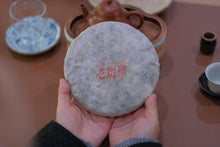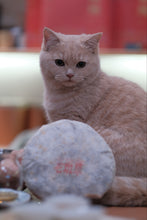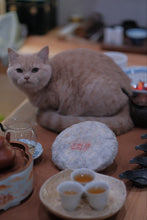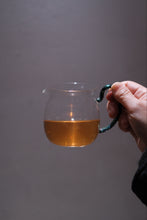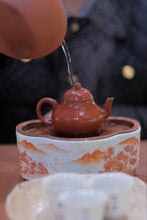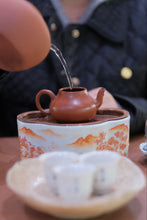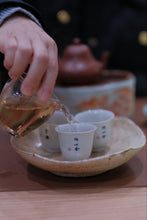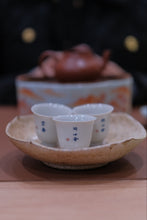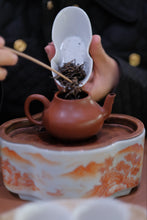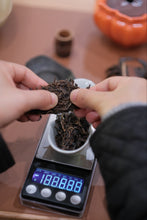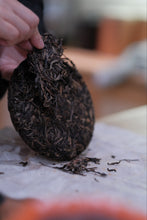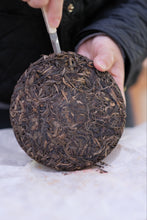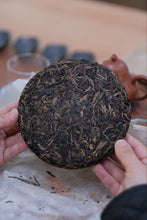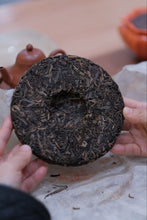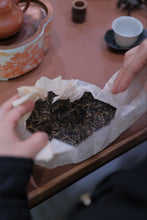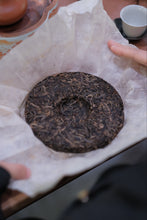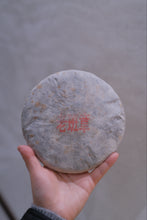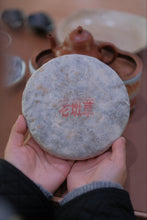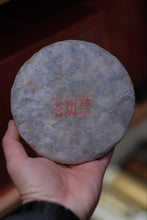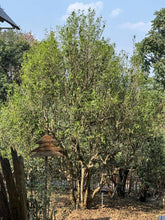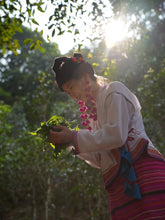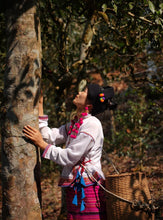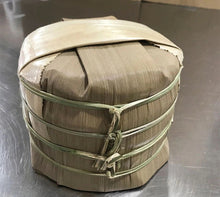
In the Dai language, "Bazha" means "a fish", and Banzhang evolved from this fish. It is located on the Bulang Mountain with a relatively high altitude, ranging from 1,700 to 1,900 meters. The Pu'er tea produced here is of excellent quality, strong and bold, and is regarded as a model in the industry, so it is named after the mountain. The history of Laobanzhang Village can be traced back to the migration from Pasha and has a history of more than five hundred years. It is the northernmost Hani ethnic village in the Banzhang Village Committee. Banzhang tea has always been famous for its high fragrance and bold flavor and has firmly occupied the throne of the "King of Pu'er".
Due to the great fame of Banzhang tea, the quality of tea products on the market varies greatly, and it is difficult to distinguish the genuine from the fake. Today, Tongxin She Teahouse would like to share a Laobanzhang raw Pu'er tea specially customized in 2016.
A piece of tea land nourishes the local tea, and it is precisely the superior environment of the tea land that has created Banzhang's reputation as the "dominant". Menghai is one of the core producing areas of Yunnan Pu'er tea. There are numerous famous mountains and villages in the area. The dense forest vegetation grows mixed with ancient tea trees, maintaining a primitive and natural ecological environment.
The tea trees in the Laobanzhang area have deep roots and rich internal substances in their leaves, which are reflected in the taste as high fragrance, rich flavor, and a distinct Banzhang flavor. This tea uses the pure materials of Laobanzhang's century-old ancient trees as raw materials. People who drink tea all know the significance of these words. It not only has a higher drinking value in terms of taste but also has predictability in later transformation.
When you open the tissue paper, the tea cake is brownish-brown, the surface of the cake is clean and dry, and the tea strips are plump and even. Before brewing, you can break the tea cake apart and put it in a tea waking pot to fully wake up the tea. Brew it with a purple clay teapot and pour hot water at a high temperature to stimulate the aroma of the tea.
The tea soup is golden and bright, and the scents of flowers, camphor, and pear flowers come out one after another. The aroma is full and rich in layers. It tastes smooth when entering the mouth. There is a slight bitterness at first, but it dissipates quickly, followed by a sweet aftertaste with the sweetness of rock sugar. The throat charm is sweet and moist and lasts long. The taste of the tea soup is mellow, rich in flavor and powerful. You can clearly feel the thickness and strength of the tea soup. After drinking the tea soup, the throat charm lingers, and the sweet aftertaste in the mouth and between the teeth lasts for a long time.
In order to allow more tea lovers to experience Laobanzhang tea, this time we have prepared it in packages of 20 grams per bag and 200 grams per cake, which lowers the threshold for tasting Laobanzhang tea and is also convenient for brewing. There is also a version of 5 cakes per bundle wrapped in bamboo shoots. Five cakes are bundled together, with inner tissue paper packaging and outer packaging made of bamboo shoots from Yunnan, which is helpful for collection and later transformation. In the collection of Pu'er tea, Laobanzhang ancient pure tea has always been on the list. This raw Pu'er tea is highly recommended for collection if conditions permit.
Brewing method:
Tea ware: a covered bowl (120ml)
Amount of tea: 7g
Brewing water: purified water, mountain spring water
Water temperature: 100-degree boiling water
Brewing: Use the first brew to wash and moisten the tea, and then pour water and quickly pour out the tea soup. After the fifth or sixth brew, you can appropriately steep the tea for a while.























